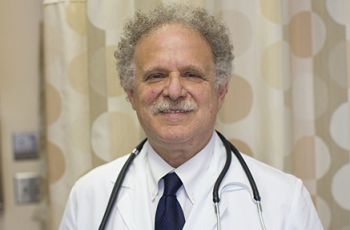The COVID-19 pandemic, the health impacts of racism, and further recognition of the role environmental and social inequities play in determining a person’s health are just a few of the important public and population health issues that confront our communities, institutions, and patients.
In a pre-print article from in Academic Medicine, experts from academic institutions across the country, including the George Washington University (GW), were convened by the Association of American Medical Colleges (AAMC) and proposed outcome metrics that assess the effectiveness of public and population health (PPH) curricula and programs in medical education. These recommendations are intended to assist academic medical centers with developing targeted local evaluation to support and further integrate PPH education for physicians-in-training.
In recent years, GW’s Clinical Public Health curriculum for medical students, and similar curriculum and training activities at other medical schools, has helped prepare future physicians in addressing these public health and population health issues, to serve the needs of diverse populations, and to advance health equity. While different teaching and experiential learning activities in the public health and population health sciences have been implemented, there is no existing framework to measure the effectiveness of public and population health education in medical education programs.
The proposed evaluation framework in the Academic Medicine paper includes student and faculty reaction to PPH education content, assessments of the learning that was accomplished, and the application of knowledge and skills in practice. It also includes the impact of PPH education programs on the academic institution, community, and overall community health.
“It is clear that there is an increasingly important role that the nation’s clinicians must play to identify and address the systemic inequities that so dramatically impact the health of our patients and our communities. The clinical education our students and trainees receive must be enhanced to prepare them to take on these roles,” said Lawrence “Bopper” Deyton, MD ’85, MSPH, senior associate dean for clinical public health, Murdock Head Professor of Medicine and Health Policy and a member of the AAMC Expert Panel. “Academic institutions must be able to evaluate and determine the benefits of public health and population health education on patients, health systems, learners, and faculty – as well as in our communities. This framework can serve as a starting point to help institutions identify goals, areas for improvement, and opportunities for promoting investment in public and population health education.”
The framework the AAMC Expert Panel developed is based on the New World Kirkpatrick Model, which has four components: reaction, learning, behavior, and results. Panel members also added a fifth level: systems-based outcomes.
The article’s authors write that the framework can help academic leaders demonstrate the effectiveness of such programming to funders and stakeholders, as well as to deans looking to identify gaps in curriculum to better train future physicians to address important public health and population health issues.
For more information on the framework and to read the Academic Medicine paper, “Teaching Public and Population Health in Medical Education: An Evaluation Framework,” please visit journals.lww.com/academicmedicine/Abstract/9000/Teaching_Public_and_Population_Health_in_Medical.97000.aspx.

